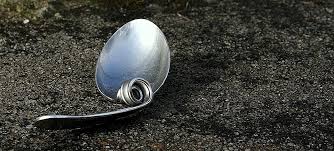What if I told you there were metals that could bend on their own. Would you believe me? In fact, there are metals that can do just that: Shape-Memory-Alloys, or SMAs in short.
Science
”Now think about an animal you never want to kiss!”, this is the last verse of the riddle of the sphinx in the labyrinth. For Harry Potter the solution is clear. He never wants to kiss a spider and with this emotion he is not alone. A lot of people […]
The word “Photosynthesis“ is not hard to understand even if it might sounds difficult. “Photo” is the Greek word for “Light” and “synthesis” for “putting together”.
The retina is a specific nerve tissue on the inside of the eye. In general it could be described as a projection surface for our surrounding. It is responsible for transferring arousal – caused by light stimuli – to regions of the brain.
Due to the definition, nanotechnology is the branch of technology based on structures with dimensions at the nanoscale, which is about 1 to 100 nanometers (1 nanometer is 10-9 of a meter). Especially it is manipulation of individual atoms and molecules. So nanoscience works in extremely small things, which can […]
Smart, clean surfaces are the dream of many housekeepers. The vision of giving up on windows cleaning, washing clothes, scrubbing and polishing dirty surfaces with chemical agents is very tempting. Technology comes out to meet it, but the most suitable applications have yet to be settled.
Nature is an amazing source of solutions, which have their own applications in the technology world. Biomimetics is nothing else than imitating models and elements of nature to solve complicated humans problems. The word comes from Ancient Greek βίος (life) and μίμησις (imitation).
What we see as light and feel as warmth is the result of a fusion reaction in the core or our Sun: hydrogen nuclei collide, fuse into heavier helium atoms and release tremendous amounts of energy in the process.
Each and every one of us can become a black hole. Sounds strange, right? Don’t worry chances for that ain’t big.
Most of you probably connect Heliocentric Theory with Nicolaus Copernicus, a Polish astronomer of 16th century. The truth is that the theory itself is much older than him. Frankly it is over 1800 years older than him.









